Sham Acupuncture
How to submit an article:
- Registered users can submit any published journal article that has a unique DOI (Digital Object Identifier) name or link to Research Hub.
- For example, you can paste the full DOI link:
https://doi.org/10.1109/5.771073or just the DOI name:10.1109/5.771073into the field above and click submit. - The person who is first to submit a valid article to Research Hub will forever be credited for it, and every article submission earns you +6 Research Points.
Related Topics
Published research studies are articles that present the findings of original research that has undergone a peer-review process and has been made publicly available in scholarly journals, books or other media.
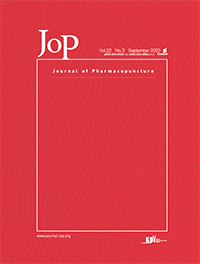
The Effects of Acupuncture on Crohn’s Disease: a systematic review and meta-analysis
2023 Sep 30 Journal of Pharmacopuncture Bae JH, Kang SY, You SE, Jeong HI, Jang S, Kim KH
Meta-Analysis Systematic Review Acupuncture Crohn's DiseaseAcupuncture combined with moxibustion has shown significant benefits in the treatment of mild to moderate Crohn's disease.
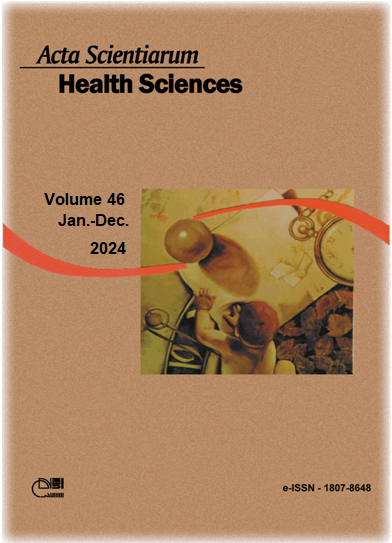
Acupuncture effects on pain and health status in women with fibromyalgia: a randomized clinical trial
2023 Aug 08 Acta Scientiarum. Health Sciences Baelz GU, Silva AMV, Duarte BSL, Steffen EL, Silva JEP, Signori LU
Acupuncture, compared to sham acupuncture, significantly reduced pain by 16% (p<0.001) and improved health status by 21% (p<0.001) in women with fibromyalgia. The improvement in health status is attributed to increased ability to work and go out, and reduced pain, fatigue, tiredness, and depression.
Randomised Controlled Trial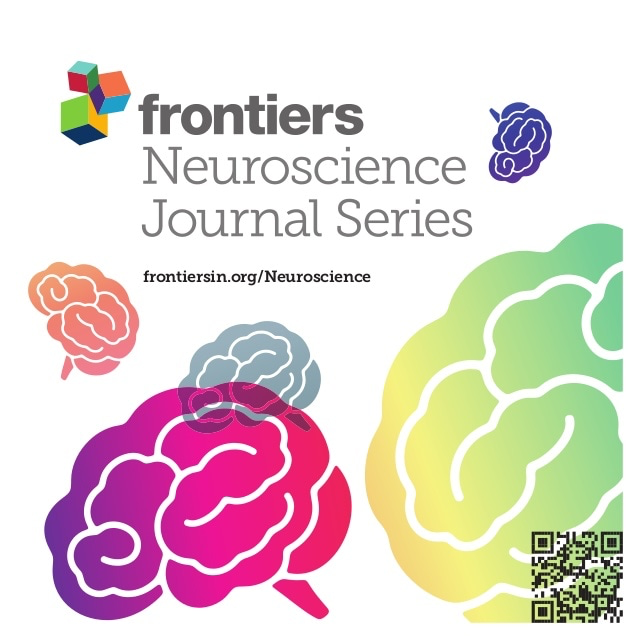
Acupuncture for carpal tunnel syndrome: A systematic review and meta-analysis of randomized controlled trials
2023 Feb 23 Frontiers in Neuroscience Dong Q, Li X, Yuan P, Chen G, Li J, Deng J, et al.
Systematic Review Meta-Analysis Carpal Tunnel SyndromeAcupuncture's effectiveness for carpal tunnel syndrome uncovers better pain relief compared to night splints and potential benefits when used alongside other treatments
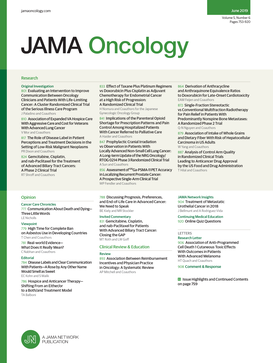
Effect of Electroacupuncture on Insomnia in Patients With Depression
2022 Jul 07 JAMA Oncology Yin X, Li W, Liang T, Lu B, Yue H, Li S, et al.
In this randomized clinical trial of electroacupuncture (EA) treatment for insomnia in patients with depression, quality of sleep improved significantly in the EA group compared with the sham acupuncture (SA) or control group at week 8 and was sustained at week 32.
Randomised Controlled Trial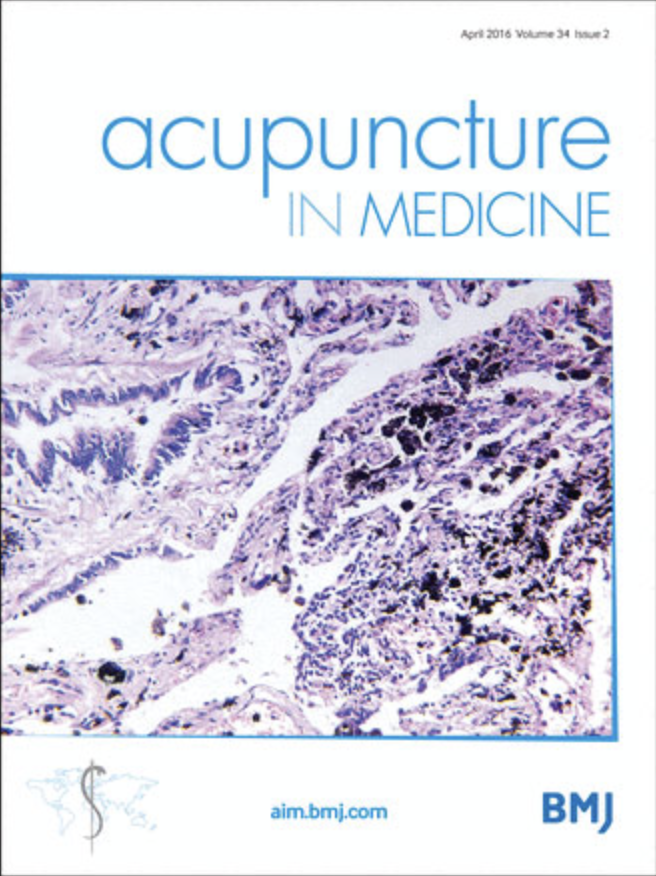
Efficacy of acupuncture in improving symptoms and quality of life of patients with acne vulgaris: a randomized sham acupuncture-controlled trial
2022 Apr 18 Acupuncture in Medicine Jiao R, Zhai X, Zhang X, Xiong Z, Liu Z
Acupuncture may not effectively relieve the symptoms of patients with moderate or severe acne vulgaris (AV), or improve quality of life (QoL).
Randomised Controlled Trial Acne AcupunctureResearch insights are moderated by the Research Hub team and offer an at-a-glance overview of interesting research findings.

2023 Journal of Pharmacopuncture
Acupuncture combined with moxibustion has shown significant benefits in the treatment of mild to moderate Crohn's disease.
Meta-Analysis Acupuncture Crohn's Disease
The Effects of Acupuncture on Crohn’s Disease: a systematic review and meta-analysis
Bae JH, Kang SY, You SE, Jeong HI, Jang S, Kim KH

2023 Frontiers in Neuroscience
Acupuncture's effectiveness for carpal tunnel syndrome uncovers better pain relief compared to night splints and potential benefits when used alongside other treatments
Systematic Review Carpal Tunnel Syndrome
Acupuncture for carpal tunnel syndrome: A systematic review and meta-analysis of randomized controlled trials
Dong Q, Li X, Yuan P, Chen G, Li J, Deng J, et al.
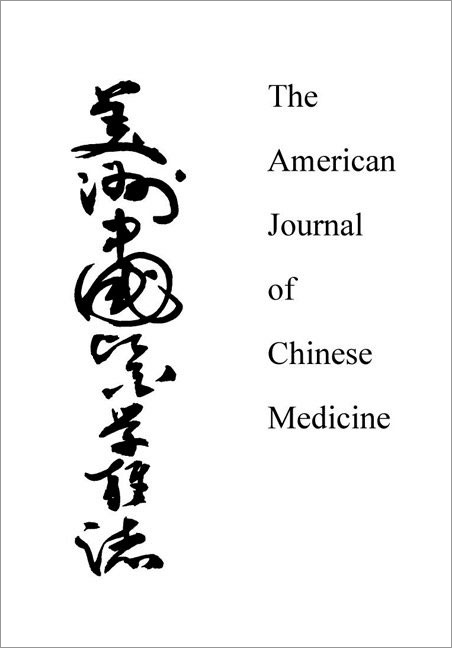
2022 The American Journal of Chinese Medicine
Acupuncture is a safe and effective treatment for Seasonal Allergic Rhinitis, significantly improving symptoms without needing relief medication or causing side effects.
Randomised Controlled Trial
Effect of Acupuncture in the Treatment of Seasonal Allergic Rhinitis: A Randomized Controlled Clinical Trial
Xue CC, English R, Zhang JJ, Da Costa C, Li CG
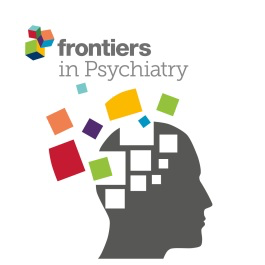
2021 Frontiers in Psychiatry
Acupuncture alone or combined with standard care was associated with significant improvements in perimenopausal depression and reductions of other menopausal symptoms.
Systematic Review HRT Perimenopausal Depression
Acupuncture as an Independent or Adjuvant Management to Standard Care for Perimenopausal Depression: A Systematic Review and Meta-Analysis
Zhao FY, Fu QQ, Kennedy GA, Conduit R, Zhang WJ, Zheng Z
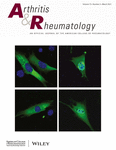
2021 Arthritis & Rheumatology
Intensive electroacupuncture appears to reduce pain and improve function in knee osteoarthritis patients more effectively than sham acupuncture.
Randomised Controlled Trial Acupuncture
Efficacy of Intensive Acupuncture Versus Sham Acupuncture in Knee Osteoarthritis: A Randomized Controlled Trial
Tu JF, Yang JW, Shi GX, Yu ZS, Li JL, Lin LL, et al.
Review Articles
Review articles summarise and critically evaluate the current state of research on a specific topic or field by synthesising multiple primary research studies.

The Effects of Acupuncture on Crohn’s Disease: a systematic review and meta-analysis
2023 Sep 30 Journal of Pharmacopuncture Bae JH, Kang SY, You SE, Jeong HI, Jang S, Kim KH
Meta-Analysis Systematic Review Acupuncture Crohn's DiseaseAcupuncture combined with moxibustion has shown significant benefits in the treatment of mild to moderate Crohn's disease.

Acupuncture for carpal tunnel syndrome: A systematic review and meta-analysis of randomized controlled trials
2023 Feb 23 Frontiers in Neuroscience Dong Q, Li X, Yuan P, Chen G, Li J, Deng J, et al.
Systematic Review Meta-Analysis Carpal Tunnel SyndromeAcupuncture's effectiveness for carpal tunnel syndrome uncovers better pain relief compared to night splints and potential benefits when used alongside other treatments

Safety of acupuncture in oncology: A systematic review and meta-analysis of randomized controlled trials
2022 Mar 08 Cancer Melanie D. Höxtermann, Heidemarie Haller, Shaimaa Aboudamaah, Armin Bachemir, Gustav Dobos, Holger Cramer, et al.
The current review indicates that acupuncture is as safe as sham acupuncture and active controls in oncological patients.
Systematic Review Meta-Analysis
Sacral Acupuncture for Lower Urinary Tract Symptoms: A Systematic Review of Randomized Controlled Trials
2022 Feb 28 Journal of Acupuncture Research Park J, Chun SE, Park MC, Jo EH
Sacral acupuncture improved LUTS compared with the sham acupuncture group or other remedy groups, but a quantitative evaluation of the treatment effect could not be performed.
Systematic Review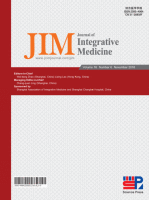
Effectiveness and safety of acupuncture for treating functional constipation: An overview of systematic reviews
2022 Jan Journal of Integrative Medicine Yao J, Chen L, Xiao X, Hou T, Zhou S, Xu M, et al.
Acupuncture may be more efficacious than sham acupuncture for improving CSBMs and BSFS scores and may be superior to anti-constipation drugs for improving bowel movement frequency, as well as quality of life. Limitations to current studies and inconsistent evidence suggest a need for more rigorous and methodologically sound SRs to draw definitive conclusions.
Systematic Review Constipation AcupunctureClinical Trials
Clinical trials are research studies that involve people and are conducted to evaluate the safety and efficacy of new treatments or interventions, such as drugs, medical devices, or behavioural therapies.

Acupuncture effects on pain and health status in women with fibromyalgia: a randomized clinical trial
2023 Aug 08 Acta Scientiarum. Health Sciences Baelz GU, Silva AMV, Duarte BSL, Steffen EL, Silva JEP, Signori LU
Acupuncture, compared to sham acupuncture, significantly reduced pain by 16% (p<0.001) and improved health status by 21% (p<0.001) in women with fibromyalgia. The improvement in health status is attributed to increased ability to work and go out, and reduced pain, fatigue, tiredness, and depression.
Randomised Controlled Trial
Effect of Electroacupuncture on Insomnia in Patients With Depression
2022 Jul 07 JAMA Oncology Yin X, Li W, Liang T, Lu B, Yue H, Li S, et al.
In this randomized clinical trial of electroacupuncture (EA) treatment for insomnia in patients with depression, quality of sleep improved significantly in the EA group compared with the sham acupuncture (SA) or control group at week 8 and was sustained at week 32.
Randomised Controlled Trial
Efficacy of acupuncture in improving symptoms and quality of life of patients with acne vulgaris: a randomized sham acupuncture-controlled trial
2022 Apr 18 Acupuncture in Medicine Jiao R, Zhai X, Zhang X, Xiong Z, Liu Z
Acupuncture may not effectively relieve the symptoms of patients with moderate or severe acne vulgaris (AV), or improve quality of life (QoL).
Randomised Controlled Trial Acne Acupuncture
Effect of Acupuncture in the Treatment of Seasonal Allergic Rhinitis: A Randomized Controlled Clinical Trial
2022 Jan The American Journal of Chinese Medicine Xue CC, English R, Zhang JJ, Da Costa C, Li CG
Randomised Controlled TrialAcupuncture is a safe and effective treatment for Seasonal Allergic Rhinitis, significantly improving symptoms without needing relief medication or causing side effects.

Regulatory Effects of Acupuncture on Emotional Disorders in Patients With Menstrual Migraine Without Aura: A Resting-State fMRI Study
2021 Oct 04 Frontiers in Neuroscience Yutong Zhang, Ziwen Wang, Jiarong Du, Jixin Liu, Tao Xu, Xiao Wang, et al.
True acupuncture (TA) had a relatively better effect in reducing the frequency of migraine attack than sham acupuncture (SA). The two therapies have different modulation effects as TA regulates emotional disorders by modulating the frontal-limbic regions, and SA may modulate pain perception through the placebo effect on insula and by indirectly regulating emotional disorders.
Randomised Controlled Trial AcupunctureStudy Protocols
Published study protocols are detailed plans that outline the objectives, methodology, statistical analyses, and organisation of a research study that have been made publicly available for others to review and use as a reference.
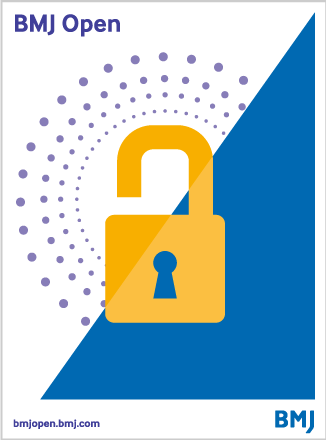
Acupuncture for retinitis pigmentosa: study protocol for a randomised, sham-controlled trial
2021 Nov BMJ Open Huang H, Wang J, Li H, Lei R, Zou W, Huang Q, et al.
This is a study protocol for a randomized, sham-controlled trial designed to evaluate the effects of acupuncture on visual field sensitivity, best-corrected visual acuity, and other outcomes in patients with RP, with results to be assessed at 3, 6, and 9 months.
Study Protocol Retinitis Pigmentosa
Acupuncture for combat post-traumatic stress disorder: trial development and methodological approach for a randomized controlled clinical trial
2021 Sep 06 Trials Hollifield M, Hsiao AF, Carrick K, Gory Munoz A, Calloway T, Cocozza K, et al.
The study results will be definitive because both clinical and biological outcomes will be assessed and correlated. Issues such as the number needed for recruitment and improvement, use of sham acupuncture, choice of biological measure, and future research need will be discussed.
Study Protocol
The efficacy of acupuncture for the treatment and the fertility improvement in child-bearing period female with Hashimoto Disease: A randomized controlled study
2020 Jul 2 Medicine Li, Fangyuan ; Qi, Zhang P; Hua, Lu , ∗; Wang, Xinxin c; Ling, et al.
This will be the first large-scale trial specifically evaluating acupuncture therapy in child-bearing period female with Hashimoto thyroiditis. If the study confirms the effectiveness of acupuncture treatment, more consistent acupuncture therapy can be set up for clinical practice.
Study Protocol
The efficacy of acupuncture for the treatment and the fertility improvement in child-bearing period female with Hashimoto Disease A randomized controlled study
2020 Jul 02 Medicine Li, Fangyuan; Qi, Zhang; Hua, Lu; Wang, Xinxin; Ling, Mi; Juan, et al.
This will be the first large-scale trial specifically evaluating acupuncture therapy in child-bearing period female with Hashimoto thyroiditis.
Study Protocol Acupuncture Hashimoto Disease
The efficacy of acupuncture for the treatment and the fertility improvement in child-bearing period female with Hashimoto Disease
2020 Jul 02 Medicine Li F, Qi Z, Hua L, Wang X, Ling M, Juan D
This will be the first large-scale trial specifically evaluating acupuncture therapy in child-bearing period females with Hashimoto thyroiditis. If the study confirms the effectiveness of acupuncture treatment, more consistent acupuncture therapy can be set up for clinical practice.
Study Protocol Hashimoto DiseasePresentation Slides

Meta-Analysis
Acupuncture combined with moxibustion has shown significant benefits in the treatment of mild to moderate Crohn's disease.
Bae JH, Kang SY, You SE, Jeong HI, Jang S, Kim KH

Systematic Review
Acupuncture's effectiveness for carpal tunnel syndrome uncovers better pain relief compared to night splints and potential benefits when used alongside other treatments
Dong Q, Li X, Yuan P, Chen G, Li J, Deng J, Wu F, Yang Y, Fu H, Jin R

Randomised Controlled Trial
Acupuncture is a safe and effective treatment for Seasonal Allergic Rhinitis, significantly improving symptoms without needing relief medication or causing side effects.
Xue CC, English R, Zhang JJ, Da Costa C, Li CG

Systematic Review
Acupuncture alone or combined with standard care was associated with significant improvements in perimenopausal depression and reductions of other menopausal symptoms.
Zhao FY, Fu QQ, Kennedy GA, Conduit R, Zhang WJ, Zheng Z

Randomised Controlled Trial
Intensive electroacupuncture appears to reduce pain and improve function in knee osteoarthritis patients more effectively than sham acupuncture.
Tu JF, Yang JW, Shi GX, Yu ZS, Li JL, Lin LL, Du YZ, Yu XG, Hu H, Liu ZS, Jia CS, Wang LQ, Zhao JJ, Wang J, Wang T, Wang Y, Wang TQ, Zhang N, Zou X, Wang Y, Shao JK, Liu CZ
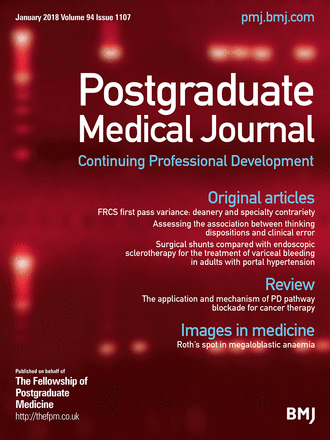
Systematic Review
Acupuncture is an effective therapy for simple obesity rather than a placebo effect.
Zhong YM, Luo XC, Chen Y, Lai DL, Lu WT, Shang YN, Zhang LL, Zhou HY
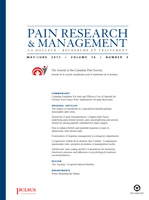
Systematic Review
Acupuncture reduced more headache days and the times of using painkiller and was more effective in reducing the frequency and degree of headache than western medicine and sham acupuncture.
Li YX, Xiao XL, Zhong DL, Luo LJ, Yang H, Zhou J, He MX, Shi LH, Li J, Zheng H, Jin RJ

Systematic Review
Acupuncture and acupressure for labor pain.
Caroline A Smith,Carmel T Collins,Kate M Levett,Mike Armour,Hannah G Dahlen,Aidan L Tan,Bita Mesgarpour
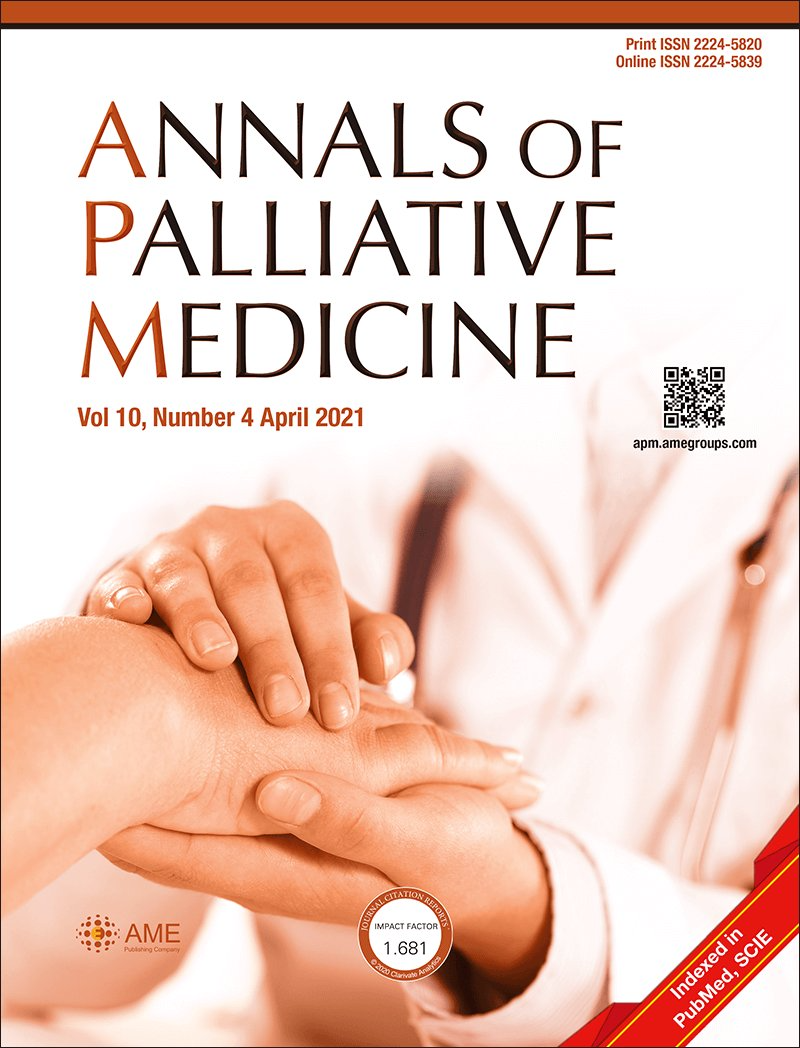
Systematic Review
Acupuncture treatment of insomnia is efficacious, not because of its placebo effect.
Liu C, Xi H, Wu W, Wang X, Qin S, Zhao Y, Zheng S, Wan Q, Xu L.

Systematic Review
Meta-analysis showed that acupuncture was comparable to drugs in the reduction of overactive bladder symptoms.
Mak TC, Chen HY, Cho WC

Systematic Review
Acupuncture appeared to significantly reduce fatigue severity measured by Chalder's Fatigue Scale and the Fatigue Severity Scale compared with other types of control.
Zhang Q, Gong J, Dong H, Xu S, Wang W, Huang G
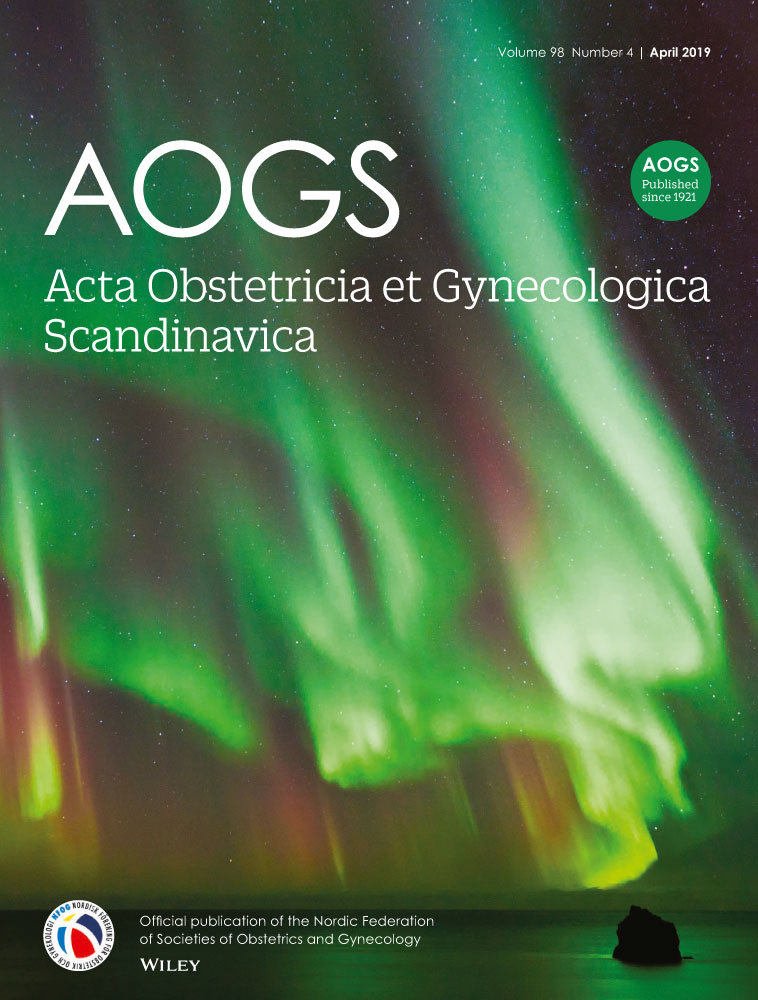
Randomised Controlled Trial
Acupuncture during IVF treatment can possibly lower anxiety at the time of embryo transfer but seems to have no long-term impact on women's quality of life.
Smith CA, de Lacey S, Chapman M, Ratcliffe J, Norman RJ, Johnson NP, Fahey P

Systematic Review
In people with hip osteoarthritis, at close to 8 weeks, acupuncture plus routine primary physician care may improve pain and function compared to routine primary physician care alone.
Manheimer E, Cheng K, Wieland LS, Shen X, Lao L, Guo M, Berman BM.

Systematic Review
Acupuncture may improve diarrhoea-predominant irritable bowel syndrome better than drugs and has the fewest side effects.
Zhu L, Ma Y, Ye S, Shu Z
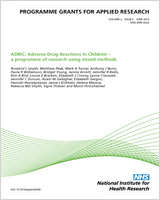
Systematic Review
The programme of research found that acupuncture was more effective than usual care and sham acupuncture for chronic pain, that it was one of the more clinically effective physical therapies for osteoarthritis and that it showed benefits in the treatment of depression.
MacPherson H, Vickers A, Bland M, et al.

Systematic Review
Acupuncture was superior to either sham acupuncture or medication (including Itopride, Mosapride, and Domperidone) in relieving the major symptoms of functional dyspepsia.
Bo Pang, Tao Jiang, Yuan-Hao Du, Jing Li, Bo Li, Ya-Cai Hu, Qiu-Han Ca

Systematic Review
The study's analysis of 272 articles comparing Traditional Chinese Acupuncture (TCA) and Sham Acupuncture (SA) for managing hot flashes in menopausal breast cancer patients indicates that while 3 studies leaned towards TCA's effectiveness, 2 showed both interventions to be beneficial.
Carlos, Luís et al.
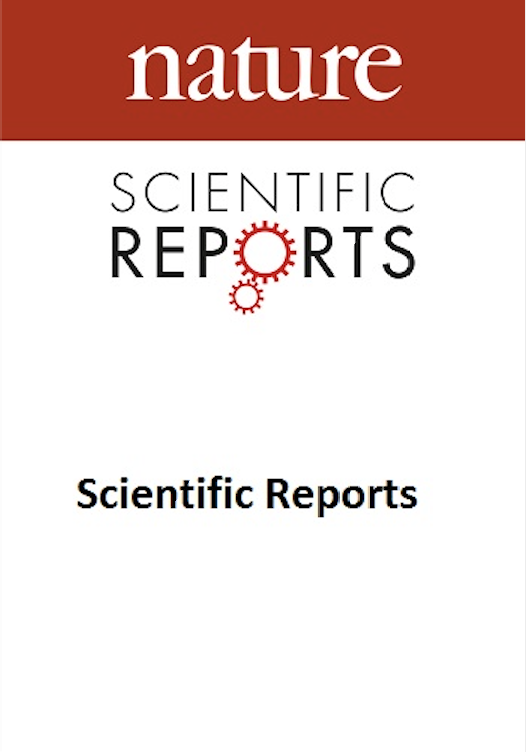
Systematic Review
Our meta-analysis found that, overall, acupuncture was superior to sham acupuncture in terms of pain relief and disability reduction for patients with musculoskeletal disorders.
Yuan QL, Wang P, Liu L, et al.

Systematic Review
Current evidence supports acupuncture as an effective treatment for chronic prostatitis/chronic pelvic pain syndrome-induced symptoms, particularly in relieving pain.
Qin Z, Wu J, Zhou J, Liu Z.
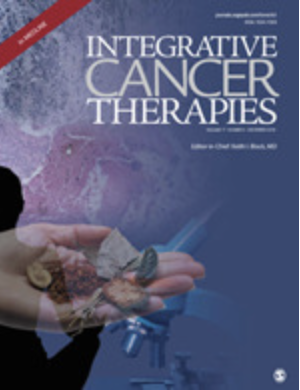
Systematic Review
There is a low level of evidence that acupuncture may be superior to sham acupuncture, drugs or hormone therapy for managing cancer-related insomnia.
Choi TY, Kim JI, Lim HJ, Lee MS.
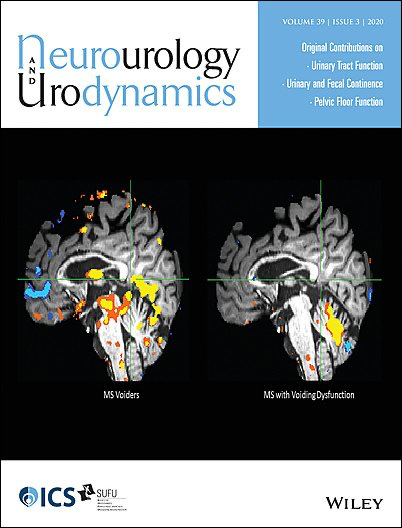
Systematic Review
Acupuncture has promising efficacy for patients with chronic prostatitis/chronic pelvic pain syndrome.
Chang SC, Hsu CH, Hsu CK, Yang SSD, Chang SJ
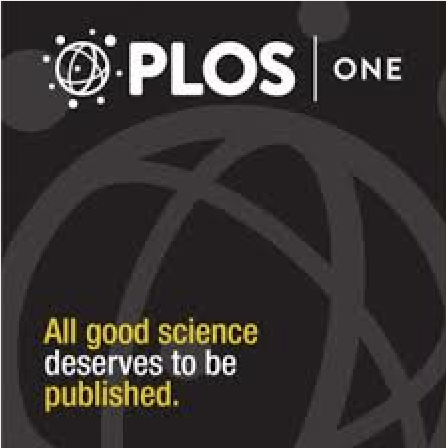
Systematic Review
There is evidence of efficacy of acupuncture as an adjunctive therapy to western medicine for treating hypertension.
Zhao XF, Hu HT, Li JS, Shang HC, Zheng HZ, Niu JF, et al
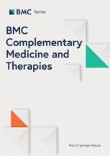
Systematic Review
The use of acupuncture for osteoarthritis is associated with significant reductions in pain intensity, improvement in functional mobility and quality of life.
Manyanga, T., Froese, M., Zarychanski, R. et al.

Systematic Review
When acupuncture was compared with no treatment, there appeared to be a benefit from acupuncture, but acupuncture appeared to be less effective than hormone therapy.
Dodin S, Blanchet C, Marc I, Ernst E, Wu T, Vaillancourt C, et al.
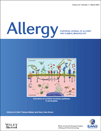
Randomised Controlled Trial
Acupuncture was found to be a more effective and safe treatment for allergic rhinitis than sham acupuncture or no treatment.
Choi SM, Park JE, Li SS, Jung H, Zi M, Kim TH, Jung S, Kim A, Shin M, Sul JU, Hong Z, Jiping Z, Lee S, Liyun H, Kang K, Baoyan L

Systematic Review
Most studies suggest that acupuncture can modulate the activity within specific brain areas, and the evidence based on meta-analyses confirmed some of these results.
Huang, W., Pach, D., Napadow, V., Park, K., Long, X., Neumann, J., Maeda, Y., Nierhaus, T., Liang, F., & Witt, C. M.
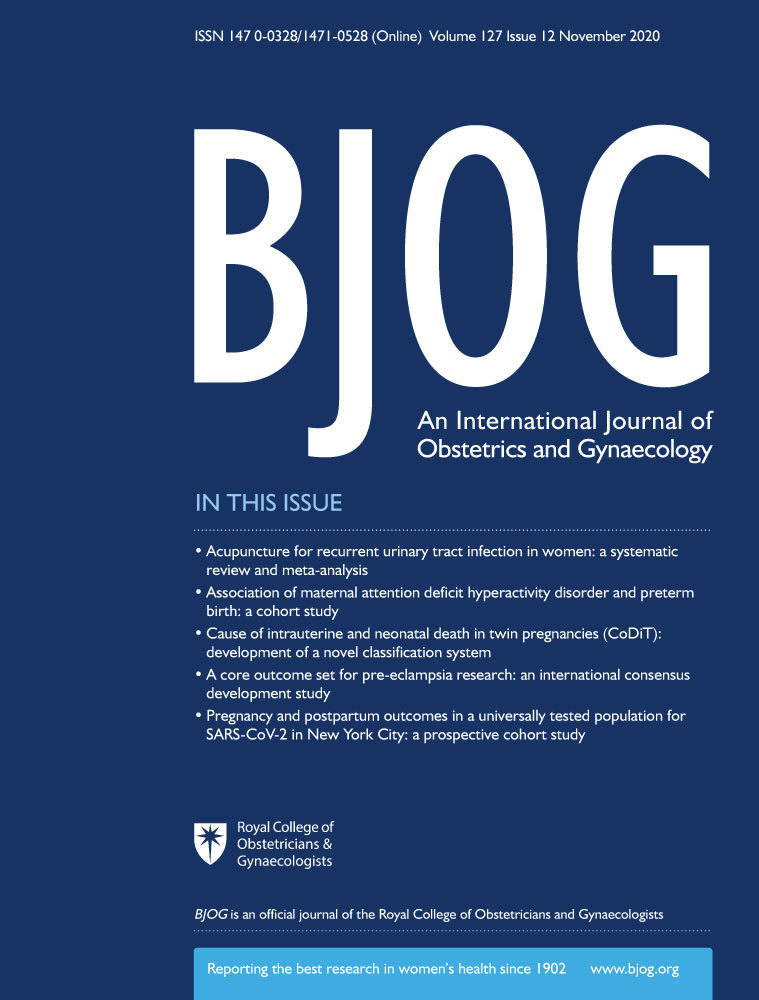
Systematic Review
Acupuncture shows promise for reducing pain in primary dysmenorrhea compared to pharmacological treatment or herbal medicine.
Cho SH, Hwang EW
Executive Summary
Write an executive summary in the form of a blog article on the topic of "Research into Chinese medicine treatment for Sham Acupuncture" summarising the research below and using language that can be easily understood by patients and avoiding medical jargon using a professional and caring tone of voice.
Write an executive summary in the form of a blog article on the topic of "Researched Chinese medicine treatments for Sham Acupuncture" summarising the research below in an objective and easy to understand way, and using language that can be easily understood by patients. Group the article into Chinese medicine treatments first, followed by nutrition and other treatments. Avoid using medical jargon and use a professional and caring tone of voice.
Write me a concise but easy to understand executive summary on the topic of "Chinese medicine treatments for Sham Acupuncture" based on the following research that I will give you. Your summary should be 2 paragraphs long in Australian English spelling and include references to the studies.
A Meta-Analysis published in 2023 in the journal Journal of Pharmacopuncture found that Acupuncture combined with moxibustion has shown significant benefits in the treatment of mild to moderate Crohn's disease. In this systematic review, the researchers conducted a comprehensive search of 12 databases for randomized controlled trials on the impact of acupuncture on Crohn's disease. Three independent reviewers assessed the risk of bias for each study. The level of evidence from meta-analyses was evaluated using the Grading of Recommendations, Assessment, Development, and Evaluation methodology. The review included a total of 12 studies. Findings suggest that acupuncture combined with moxibustion, a traditional East Asian treatment involving burning a small bunch of herbs on particular points on the body, had an effect on the treatment outcomes for patients with mild to moderate Crohn's disease when compared to a group given sham acupuncture and sham moxibustion treatments. Notably, findings on the effectiveness of acupuncture treatment only, without the addition of moxibustion, were less clear. It is also important to emphasize that this review was firmly focused on the benefits of the treatment on patients with mild to moderate symptoms of Crohn's disease.
A Systematic Review published in 2023 in the journal Frontiers in Neuroscience found that Acupuncture's effectiveness for carpal tunnel syndrome uncovers better pain relief compared to night splints and potential benefits when used alongside other treatments Acupuncture was found to be more effective than night splints for pain relief, but no differences were observed in symptom severity and functional status. When used alongside other treatments, acupuncture showed potential in improving various CTS factors. However, the evidence quality was generally low or very low.
A Randomised Controlled Trial published in 2022 in the journal The American Journal of Chinese Medicine found that Acupuncture is a safe and effective treatment for Seasonal Allergic Rhinitis, significantly improving symptoms without needing relief medication or causing side effects. The study was a two-phase, single-blind, crossover clinical trial where randomly assigned subjects, split into two groups, were treated with either real or sham acupuncture. All participants received treatment thrice a week for four weeks straight before being flipped onto the other form of treatment for another four uninterrupted weeks without a washout period. The real acupuncture treatment plan was guided by Chinese Medicine Theory. The subjects' responses were measured at various stages - before, during, and after the trials. In the study, significant improvement was marked in the subjective symptom scores, both nasal and non-nasal, between the group that received the genuine acupuncture and the sham treatment. It was noteworthy, however, that no marked differences were found in the relief medication scores between the two groups. There were also no recorded side effects from either the real or sham acupuncture groups. This suggests that acupuncture proves to be a safe and effective alternative for managing Seasonal Allergic Rhinitis.
A Systematic Review published in 2021 in the journal Frontiers in Psychiatry found that Acupuncture alone or combined with standard care was associated with significant improvements in perimenopausal depression and reductions of other menopausal symptoms. Our review found that acupuncture was better than standard care alone in reducing HAMD score by 1.4–3.6, which is of clinical significance—acupuncture is better than or at least equivalent to antidepressant in improving perimenopausal women's depression. In addition to the satisfactory short-term effects, the intermediate- and long-term benefits of acupuncture against PMD outlast those of antidepressants. Long-term clinical efficacy is crucial in the management of depressive symptoms, as depression is characterized by a high recurrence rate. Frequent relapse of depression and withdrawal symptoms of antidepressants are also two major reasons for numerous patients reject psychotropic agents and seek help from CAM therapy. It is interesting to note that acupuncture also improved perimenopausal symptoms (decreased KI scores), better than either antidepressant alone or antidepressant combined with HRT, reflecting different underlying mechanisms of the two interventions (acupuncture vs. pharmacotherapy).
A Randomised Controlled Trial published in 2021 in the journal Arthritis & Rheumatology found that Intensive electroacupuncture appears to reduce pain and improve function in knee osteoarthritis patients more effectively than sham acupuncture. In this multicenter research, individuals suffering from knee osteoarthritis were randomly selected to receive one of three treatments thrice weekly, over an eight-week period: electroacupuncture, manual acupuncture, or sham acupuncture. A double-blind model was enforced where participants, outcome assessors, and statisticians remained unaware of the specific treatment group allocations. The primary benchmark of success was the response rate, which gauged the ratio of participants who noted a minimum clinically important improvement in both pain and function by the eighth week. In the study involving 480 participants, 442 were evaluated for the effectiveness of treatment. The response rates varied among the groups at week 8: with electroacupuncture and manual acupuncture groups reporting higher rates of improvement compared to the sham acupuncture group. On continued assessment at weeks 16 and 26, these higher response rates were sustained in both the electroacupuncture and manual acupuncture groups. Among the patients, those who received intensive electroacupuncture reported less pain and better function at week 8 compared to those who received sham acupuncture, and these effects persisted through week 26. Whereas, intensive manual acupuncture did not show any significant benefits at week 8 but showed improvement in the follow-up period.
A Systematic Review published in 2020 in the journal Postgraduate Medical Journal found that Acupuncture is an effective therapy for simple obesity rather than a placebo effect. The results of this meta-analysis demonstrated that acupuncture could improve body mass index, body weight and waist circumference, suggesting that acupuncture is effective compared with sham acupuncture for the treatment of obesity. However, due to the small number of included studies and limited sample size, our conclusions remain to be confirmed by further high-quality RCTs.
A Systematic Review published in 2020 in the journal Pain Research & Management found that Acupuncture reduced more headache days and the times of using painkiller and was more effective in reducing the frequency and degree of headache than western medicine and sham acupuncture. Based on high quality of evidence, we conclude that acupuncture is more effective and safer than medication or sham acupuncture in the treatment of migraine. However, the methodological quality, risk of bias, and reporting quality of SRs in acupuncture for migraine still needs improvement in future.
A Systematic Review published in 2020 in the journal Cochrane Database of Systematic Reviews found that Acupuncture and acupressure for labor pain. This review of 28 trials encompassing 3960 women assessed the efficacy of acupuncture and acupressure in managing labor pain. Results indicate that acupuncture may enhance pain relief satisfaction and reduce analgesic use. Acupressure, compared to combined control or usual care, may decrease pain intensity. However, evidence quality varies, emphasizing the need for further high-quality research including sham controls, and exploring additional outcomes like sense of control in labor and overall childbirth satisfaction.
A Systematic Review published in 2020 in the journal Annals of Palliative Medicine found that Acupuncture treatment of insomnia is efficacious, not because of its placebo effect. Acupuncture is a common alternative therapy for clinical treatment of insomnia. As the underlying mechanism is yet unclear, its efficacy is often considered as placebo effect. To clarify whether acupuncture treatment of insomnia is only due to its placebo effect, a systematic review and a meta-analysis were designed based on the comparison between acupuncture and sham acupuncture. Compared to the sham groups, acupuncture significantly decreased the PSQI score (P<0.0001). A subgroup analysis showed that the selection of sham acupuncture methods did not affect the results of PSQI. A subgroup of two trials with a total of 141 participants with major depressive disorder did not show any significant reductions in total PSQI scores (P=0.11). In addition, a significant difference was detected in the change of Insomnia Severity Index (ISI) scores (362 adult patients, 4 trials) between acupuncture and sham acupuncture (P<0.0001). The PSG and actigraphy data from acupuncture and the sham did not reveal any significant differences in the sleep structure changes. For the selection of sham acupuncture, both methods performed similarly in a clinical setting. Moreover, insomnia patients with major depression disorder were not recommended to use only acupuncture treatment.
A Systematic Review published in 2019 in the journal Acupuncture in Medicine found that Meta-analysis showed that acupuncture was comparable to drugs in the reduction of overactive bladder symptoms. Seven eligible trials involving 695 participants were included. Meta-analysis showed that acupuncture was comparable to drugs (tolterodine tartrate/solifenacin) in the reduction of micturition episodes over 24 hours, increase in voided volume of each micturition episode, and reduction of overactive bladder symptom score. In addition, acupuncture was not significantly different compared with placebo in the reduction of overactive bladder symptom score. No serious adverse events were reported.
A Systematic Review published in 2019 in the journal Acupuncture in Medicine found that Acupuncture appeared to significantly reduce fatigue severity measured by Chalder's Fatigue Scale and the Fatigue Severity Scale compared with other types of control. Sixteen studies with 1346 subjects were included. Most studies had low methodological quality. Meta-analyses showed a favourable effect of acupuncture on overall response rate compared with sham acupuncture and Chinese herbal medicine. Acupuncture also appeared to significantly reduce fatigue severity measured by Chalder’s Fatigue Scale and the Fatigue Severity Scale compared with other types of control. Our review indicated that acupuncture was more effective than sham acupuncture and other interventions (Chinese herbal medicine, mainly), but no firm conclusion could be reached owing to limited data, poor quality and potentially exaggerated effect size evaluation. Further large, rigorously designed and reported RCTs are required.
A Randomised Controlled Trial published in 2019 in the journal Acta Obstetricia et Gynecologica Scandinavica found that Acupuncture during IVF treatment can possibly lower anxiety at the time of embryo transfer but seems to have no long-term impact on women's quality of life. A multicenter randomised controlled trial was conducted recruiting women between 18 to 42 years, who were already undergoing a fresh IVF cycle and not using acupuncture. The experiment ran between June 2011 and October 2015 in Australia and New Zealand. Random assignments placed participants in either the acupuncture group or a control group which received sham acupuncture. Three treatments were administered in total - the first between the 6th and 8th day of ovarian stimulation, and the other two on the day of the embryo transfer. The results of the study highlighted that participants who received acupuncture reported experiencing significantly less anxiety following the embryo transfer. However, no discernible difference was found between the groups in terms of quality of life following the embryo transfer. The apparent benefit of acupuncture on the general health of participants was not sustained 14 weeks after the trial, which indicates that acupuncture might not have a long-term impact on a woman's emotional well-being following an IVF cycle.
A Systematic Review published in 2018 in the journal Cochrane Database of Systematic Reviews found that In people with hip osteoarthritis, at close to 8 weeks, acupuncture plus routine primary physician care may improve pain and function compared to routine primary physician care alone. Because acupuncture has previously been documented to have a low risk of adverse effects, and because arthritis patients seem to be accepting of acupuncture (Rao 1999), there seem to be few drawbacks to hip OA patients electing to receive acupuncture, other than the additional costs incurred. While some private health insurance plans cover much of the costs of acupuncture, it is not typically covered by governmental health plans, with some exceptions (NICE 2009). Thus, the out‐of‐pocket costs of the acupuncture will vary depending on an individual's health plan. Given the potential disability caused by OA of the hip and the few available treatments, acupuncture may be considered one treatment option, particularly among patients who are not yet ready for a joint replacement or who are unable to tolerate oral NSAIDs. However, patients should be informed that acupuncture probably has little or no effect in reducing pain or improving function relative to sham acupuncture. . Because there are currently no registered ongoing RCTs, this evidence base is unlikely to substantially change in the near future.
A Systematic Review published in 2018 in the journal Evidence-Based Complementary and Alternative Medicine found that Acupuncture may improve diarrhoea-predominant irritable bowel syndrome better than drugs and has the fewest side effects. Acupuncture may improve diarrhoea-predominant irritable bowel syndrome better than drugs and has the fewest side effects. Sham acupuncture may have curative effect except for placebo effect. In the future, it is necessary to perform highly qualified research to prove this result. Pinaverium bromide also has good curative effects with fewer side effects than other drugs.
A Systematic Review published in 2017 in the journal Programme Grants for Applied Research found that The programme of research found that acupuncture was more effective than usual care and sham acupuncture for chronic pain, that it was one of the more clinically effective physical therapies for osteoarthritis and that it showed benefits in the treatment of depression. We have provided the most robust evidence from high-quality trials on acupuncture for chronic pain. The synthesis of high-quality IPD found that acupuncture was more effective than both usual care and sham acupuncture. Acupuncture is one of the more clinically effective physical therapies for osteoarthritis and is also cost-effective if only high-quality trials are analysed. When all trials are analysed, TENS is cost-effective. Promising clinical and economic evidence on acupuncture for depression needs to be extended to other contexts and settings. For the conditions we have investigated, the drawing together of evidence on acupuncture from this programme of research has substantially reduced levels of uncertainty. We have identified directions for further research. Our research also provides a valuable basis for considering the potential role of acupuncture as a referral option in health care and enabling providers and policy-makers to make decisions based on robust sources of evidence.
A Systematic Review published in 2016 in the journal Evidence-Based Complementary and Alternative Medicine found that Acupuncture was superior to either sham acupuncture or medication (including Itopride, Mosapride, and Domperidone) in relieving the major symptoms of functional dyspepsia. Acupuncture therapy (including manual and electroacupuncture) achieved statistically significant effect in improving the overall symptoms and quality of life of functional dyspepsia patients comparing to sham acupuncture and is superior to medication (prokinetic agents) in ameliorating the major symptoms of functional dyspepsia (postprandial fullness and early satiation).
A Systematic Review published in 2016 in the journal Revista Latino-Americana de Enfermagem found that The study's analysis of 272 articles comparing Traditional Chinese Acupuncture (TCA) and Sham Acupuncture (SA) for managing hot flashes in menopausal breast cancer patients indicates that while 3 studies leaned towards TCA's effectiveness, 2 showed both interventions to be beneficial. The study encompassed the analysis of 272 articles from five selected databases, resulting in the inclusion of five manuscripts meeting the eligibility criteria. The primary focus was on comparing the efficacy of Traditional Chinese Acupuncture (TCA) to Sham Acupuncture (SA) in managing hot flashes among menopausal women with breast cancer. Among the selected studies, three indicated that TCA was more effective in reducing the frequency and intensity of hot flashes, while two found both interventions to be beneficial, though not significantly distinct. These studies exhibited considerable diversity in their designs, sample sizes, treatment durations, and acupuncture protocols. TCA appeared to hold promise in mitigating hot flashes, yet several methodological limitations and potential biases within the reviewed studies were noted. Consequently, there's a call for further comprehensive, large-scale, and long-term trials to elucidate TCA's true potential and overcome the limitations observed in the current body of research.
A Systematic Review published in 2016 in the journal Scientific Reports found that Our meta-analysis found that, overall, acupuncture was superior to sham acupuncture in terms of pain relief and disability reduction for patients with musculoskeletal disorders. Consistent with our current report, some previous systematic reviews have also found real acupuncture to be superior to sham acupuncture for neck pain, low back pain, osteoarthritis and myofascial pain. Two newly published meta-analyses found that real acupuncture had a more favorable effect than sham acupuncture for low back pain. Our finding that real acupuncture was more effective than sham acupuncture for neck pain and low back pain was also verified by a more recent systematic review.
A Systematic Review published in 2016 in the journal Medicine found that Current evidence supports acupuncture as an effective treatment for chronic prostatitis/chronic pelvic pain syndrome-induced symptoms, particularly in relieving pain. Real acupuncture was superior to sham acupuncture in improving symptoms (pain, voiding) and quality of life (Qof) domain subscores. Compared to sham acupuncture and medicine, acupuncture appears to be more effective at improving the global assessment. Two trials found that there is no significant difference between acupuncture and sham acupuncture in decreasing the IPSS score. Acupuncture failed to show more favorable effects in improving both symptoms and the Qof domain compared with medicine. Overall, current evidence supports acupuncture as an effective treatment for CP/CPPS-induced symptoms, particularly in relieving pain. Based on the meta-analysis, acupuncture is superior to sham acupuncture in improving symptoms and Qof. Acupuncture might be similar to medicine (Levofloxacinand, Ibuprofen, and Tamsulosin) in its long-term effects, but evidence was limited due to high ROB among included trials as well as potential heterogeneity. Acupuncture is associated with rare and slightly adverse events.
A Systematic Review published in 2016 in the journal Integrative Cancer Therapies found that There is a low level of evidence that acupuncture may be superior to sham acupuncture, drugs or hormone therapy for managing cancer-related insomnia. Three RCTs showed equivalent effects on the Pittsburgh Sleep Quality Index and 2 RCTs showed the similar effects on response rate to those of conventional drugs at the end of treatment. The other RCT showed acupuncture was better than hormone therapy in the numbers of hours slept each night and number of times woken up each night. The 3 weeks of follow-up in 2 RCTs showed superior effects of acupuncture compared with conventional drugs, and a meta-analysis showed significant effects of acupuncture. Two RCTs tested the effects of acupuncture on cancer-related insomnia compared with sham acupuncture. One RCT showed favourable effects, while the other trial failed to do so. There is a low level of evidence that acupuncture may be superior to sham acupuncture, drugs or hormone therapy. However, the number of studies and effect size are small for clinical significance. Further clinical trials are warranted.
A Systematic Review published in 2016 in the journal Neurourology and Urodynamics found that Acupuncture has promising efficacy for patients with chronic prostatitis/chronic pelvic pain syndrome. Three and four randomized controlled trials compared acupuncture with sham acupuncture (n = 101 vs. 103) and medical treatment (n = 156 vs. 138), respectively. The results revealed that acupuncture was superior to sham acupuncture as regards response rate, NIH-CPSI, and IPSS reductions, therefore, excluding the placebo effect. Compared to standard medical treatments, acupuncture had a significantly higher response rate. Acupuncture has promising efficacy for patients with CP/CPPS. Compared to standard medical treatment, it has better efficacy. Thus, it may also serve as a standard treatment option when available.
A Systematic Review published in 2015 in the journal PLOS One found that There is evidence of efficacy of acupuncture as an adjunctive therapy to western medicine for treating hypertension. Our review provided evidence of acupuncture as an adjunctive therapy to medication for treating hypertension, while the evidence for acupuncture alone lowing BP is insufficient. The safety of acupuncture is uncertain due to the inadequate reporting of it. However, the current evidence might not be sufficiently robust against methodological flaws and significant heterogeneity of the included RCTs. Larger high-quality trials are required.
A Systematic Review published in 2014 in the journal BMC Complementary Medicine and Therapies found that The use of acupuncture for osteoarthritis is associated with significant reductions in pain intensity, improvement in functional mobility and quality of life. In this systematic review, we found acupuncture administered to adults with osteoarthritis to be associated with a statistically significant reduction in pain intensity, improved functional mobility and improved health-related quality of life. Reductions in pain were greater in trials with longer intervention periods. Though under-reported and inconsistently described, major adverse events with acupuncture were not reported. Subgroup analyses suggest that acupuncture is most effective for reducing osteoarthritic pain when administered for more than four weeks. Outcome assessment for the majority of trials occurred immediately following the intervention period and thus the durability of treatment effects are unknown.
A Systematic Review published in 2013 in the journal Cochrane Database of Systematic Reviews found that When acupuncture was compared with no treatment, there appeared to be a benefit from acupuncture, but acupuncture appeared to be less effective than hormone therapy. We found insufficient evidence to determine whether acupuncture is an effective treatment for controlling vasomotor menopausal symptoms. When we compared acupuncture with sham acupuncture, there was no evidence of any significant difference in their effect on menopausal vasomotor symptoms. When we compared acupuncture with no treatment there appeared to be a benefit from acupuncture, but acupuncture appeared to be less effective than hormone therapy (HT). These findings should be treated with great caution as the evidence was of low or very low quality and the studies comparing acupuncture versus no treatment or HT were not controlled with sham acupuncture or placebo HT. Data on adverse effects were lacking.
A Randomised Controlled Trial published in 2012 in the journal Allergy found that Acupuncture was found to be a more effective and safe treatment for allergic rhinitis than sham acupuncture or no treatment. Methodology: The study was a multicenter, parallel-controlled experiment. Three groups of randomized participants either received active acupuncture, sham acupuncture (minimal acupuncture at nonacupuncture points), or were placed on a waitlist (no acupuncture treatment). The treatments were given three times a week over a four-week period. Discussion of Results: The active acupuncture group showed a marked reduction in allergic rhinitis symptoms compared to the other two groups. Despite this, both acupuncture types still showed significant improvements in symptoms when compared to their initial condition, confirming the efficacy of acupuncture in treating allergic rhinitis.
A Systematic Review published in 2012 in the journal PLOS One found that Most studies suggest that acupuncture can modulate the activity within specific brain areas, and the evidence based on meta-analyses confirmed some of these results. Brain response to acupuncture stimuli encompasses a broad network of regions consistent with not just somatosensory, but also affective and cognitive processing. While published results on acupuncture and fMRI were heterogeneous, from a descriptive perspective most studies suggest that acupuncture can modulate the brain activity within specific brain areas, and the evidence based on meta-analyses confirmed part of these results. Future studies should further improve methodological aspects and reporting related to both fMRI and acupuncture, and strictly control experimental conditions for more robust inference. Specifically, direct contrast analyses should be used to contrast different stimulus conditions (e.g. verum versus sham acupuncture) when evaluating research questions concerning acupuncture specificity.
A Systematic Review published in 2010 in the journal BJOG: An International Journal of Obstetrics & Gynaecology found that Acupuncture shows promise for reducing pain in primary dysmenorrhea compared to pharmacological treatment or herbal medicine. This study aimed to evaluate the effectiveness of acupuncture for treating primary dysmenorrhea through a review of randomized controlled trials (RCTs). A comprehensive search was conducted across multiple databases up to July 2008, encompassing English, Korean, Japanese, and Chinese sources. The review included 27 RCTs, of which only nine described randomization methods clearly, and none provided details about allocation concealment. Acupuncture demonstrated a significant reduction in pain compared to pharmacological treatment or herbal medicine. While some studies reported reduced pain within groups, two trials found no significant difference between acupuncture and sham acupuncture. The review suggests promising evidence from RCTs supporting acupuncture's efficacy in treating primary dysmenorrhea when compared to pharmacological treatment or herbal medicine. However, the results were hindered by methodological limitations. The study emphasizes the need for more rigorous nonpenetrating placebo-controlled RCTs to establish the effectiveness of acupuncture for primary dysmenorrhea treatment.
Moderation Tools
Topic
Sign In
Users not signed in are limited to viewing the 5 most recent items of content.